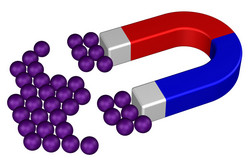A new generation of high-performance permanent magnets not based on rare earth elements
Exploration is driven not only by scientific interest, but also the needs of the electric car and wind energy industries, amongst others. The rare earth permanent magnet (PM) segment accounts for over 60 % of the total magnet market, or over USD 6 billion. The rest is largely ferrites and the aluminium nickel cobalt (AlNiCo) family of iron alloys. There are a number of families of PM. The most powerful PMs are based on rare earth elements. Neodymium iron boron magnets are good alternatives, but they have a high cost and a maximum operational temperature of only 200 °C. For higher operational temperatures, but at an even higher cost, the samarium–cobalt 1:5 and 2:17 families are available. The objective of the REFREEPERMAG (Rare earth free permanent magnets) project was to design and fabricate next-generation PMs without relying on critical strategic materials, using nanotechnology strategies. The first step involves theoretical modelling using a combinatorial approach of the most promising nanostructures for high performance. A wide range of physical and chemical strategies has been used for the synthesis and fabrication of novel materials, including thin-film combinatorial synthesis and modified polyol synthesis of nanowires, electrodepositing, co-precipitation, sol-gel and electrochemistry. The project has also comprehensively characterised these materials in terms of their structural, microstructural, magnetic and transport properties. Measurements used included material composition, crystallography, surface morphology, and electrical and thermal transport behaviour. The best performing materials were selected for the fabrication of realistic devices, and the industrial partners involved are testing these devices in their particular areas of expertise. The best performing device designs will be readied for licensing and mass production for niche applications.
Keywords
Permanent magnets, rare earth elements, ferrites, AlNiCo, REFREEPERMAG







